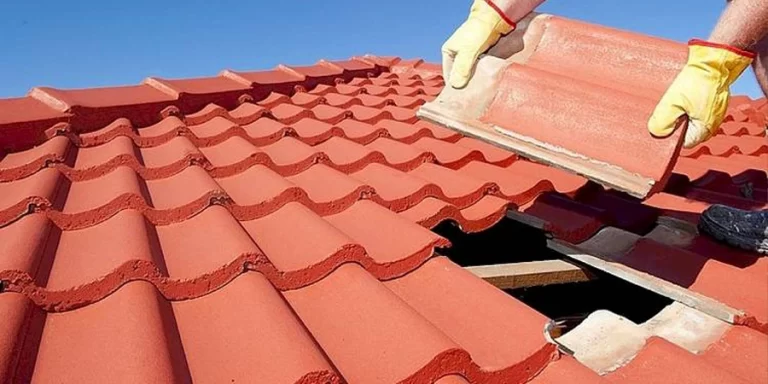How to Repair a Damaged Roof:
A Comprehensive Guide to Roof Repair
A damaged roof can pose significant challenges to homeowners. From leaks that lead to water damage to compromised structural integrity, a damaged roof requires swift attention and repair. Repairing a damaged roof might seem like a daunting task, but with proper knowledge and guidance, you can successfully restore your roof’s functionality and protect your home from further harm. This comprehensive guide will walk you through the steps and considerations involved in repairing a damaged roof.

Assessment and Safety Precautions:
Before you embark on any roof repair project, it’s crucial to perform a thorough assessment of the damage. This assessment will help you understand the extent of the problem and decide whether you can handle the repairs on your own or if professional assistance is required. Here are the steps to follow:
- Safety First: Always prioritize safety. If the damage is extensive or involves structural issues, consider hiring a professional roofing contractor. Climbing onto a damaged roof without proper safety equipment can be hazardous.
- Exterior Inspection: Begin by visually inspecting the exterior of your roof. Look for missing or damaged shingles, cracked tiles, curled edges, or any signs of wear and tear.
- Interior Inspection: Inside your home, check for water stains on ceilings, walls, or in the attic. These stains often indicate a leak in the roof. Mold or mildew growth can also be indicative of water infiltration.
- Gutter and Drainage Assessment: Check the gutters and downspouts for debris buildup. Clogged gutters can lead to water backup, which can damage the roof and its underlying structure.
Repairing Different Types of Roof Damage:
Depending on the type and severity of the damage, you might need to perform specific repairs. Here’s how to address common types of roof damage:
1. Replacing Shingles or Tiles:
- Identify the damaged shingles or tiles and carefully remove them. Use a flat bar to lift the edges of the adjacent shingles without causing further damage.
- Clean the area underneath and ensure there’s no debris left.
- Slide the new shingle or tile into place, ensuring it matches the surrounding pieces. Nail it down according to manufacturer guidelines.
- Apply roofing cement under the edges of adjacent shingles to seal and secure them.

2. Fixing Leaks:
- Trace the source of the leak by examining the area where water is entering.
- Clear the damaged area of any debris or foreign materials.
- Apply roofing cement or sealant to cover the damaged spot. For larger leaks, consider using a patch made from roofing material.
- Monitor the area after the repair to ensure the leak is fully resolved.
3. Repairing Flashing:
- Inspect the flashing around chimneys, vents, and other roof penetrations. Look for signs of rust, corrosion, or damage.
- Remove old flashing and clean the area thoroughly.
- Install new flashing, ensuring a tight seal around the penetration.
- Secure it using appropriate fasteners and sealant.
4. Dealing with Structural Damage:
If you notice sagging areas or structural damage, it’s advisable to consult a professional roofing contractor or structural engineer. These issues may require more complex repairs that involve adjusting the underlying framework of the roof.
Materials and Tools:
Having the right materials and tools is essential for successful roof repairs. Depending on the type of damage, you might need:
- Replacement shingles or tiles
- Roofing cement or sealant
- Flashing material
- Nails or roofing staples
- Caulking gun
- Pry bar or flat bar
- Hammer
- Safety harness and ladders
- Roofing knife or shears
- Patch material (for larger holes or leaks)
Preventive Measures:
Once you’ve repaired the damaged roof, it’s important to take preventive measures to avoid future issues:
- Regularly clean gutters and downspouts to prevent debris buildup and water backup.
- Trim overhanging branches to prevent them from damaging the roof during storms.
- Inspect the roof annually and after severe weather events to catch and address any potential problems early.
- Consider applying a reflective roof coating to extend the life of your roof and reduce energy costs.

Repairing a damaged roof requires a systematic approach, attention to detail, and a focus on safety. While some minor repairs can be tackled by homeowners, more extensive damage might necessitate the expertise of a professional roofing contractor. Regular maintenance, prompt repairs, and preventive measures will not only extend the life of your roof but also protect your home from potential water damage and structural issues. Remember, safety should always be your top priority, and if in doubt, it’s wise to consult experts in the field.




























